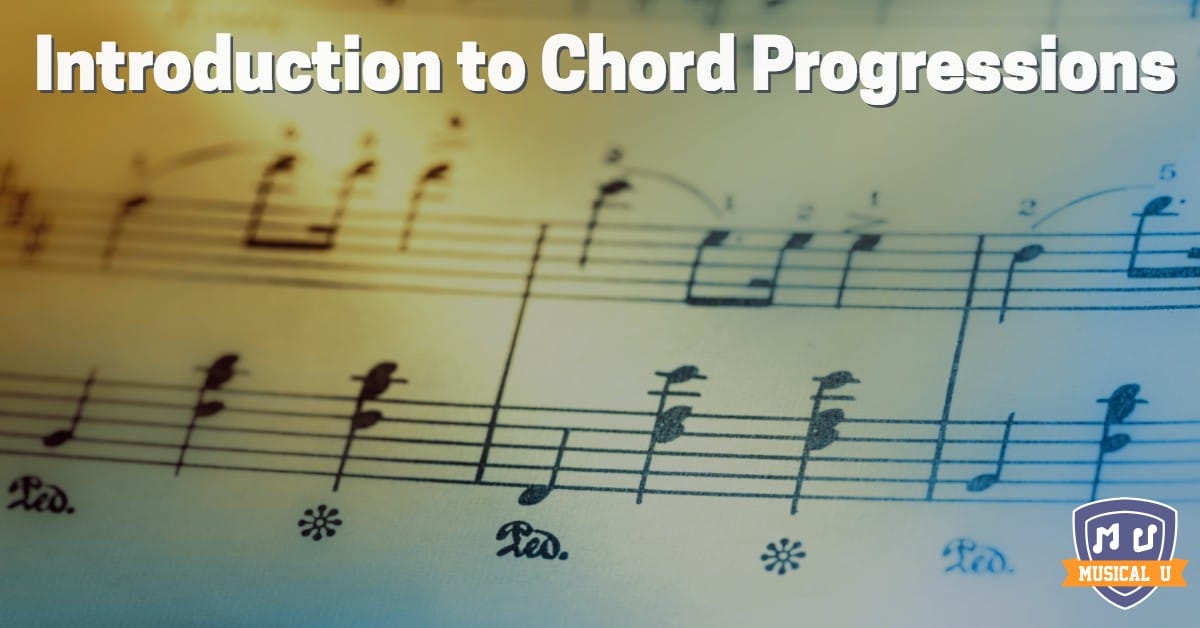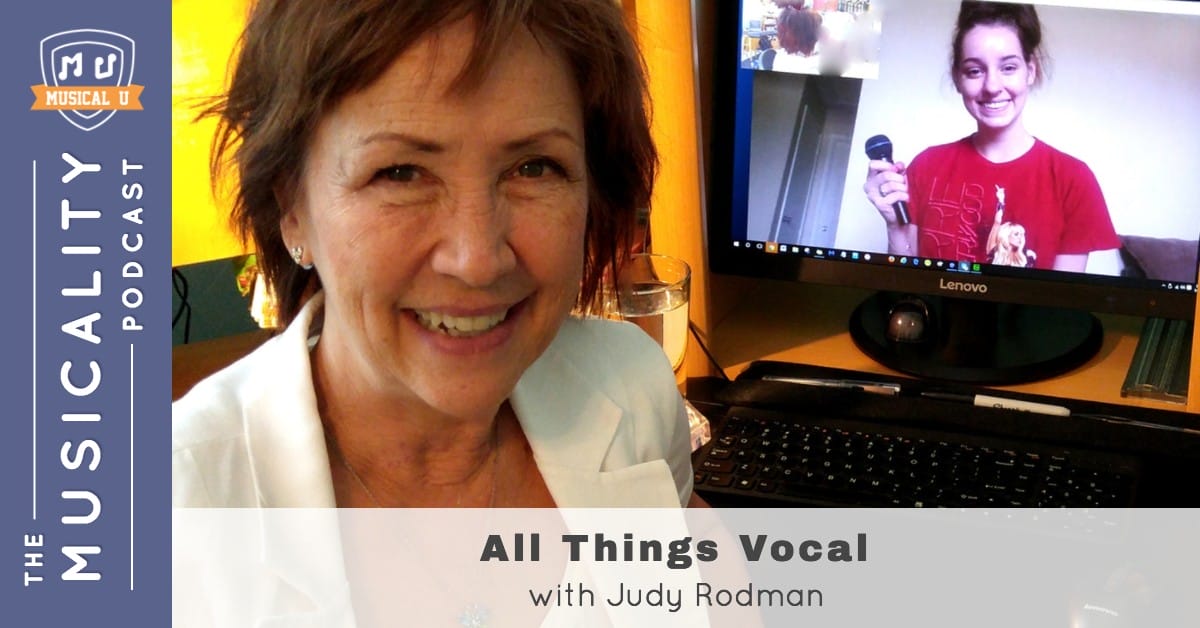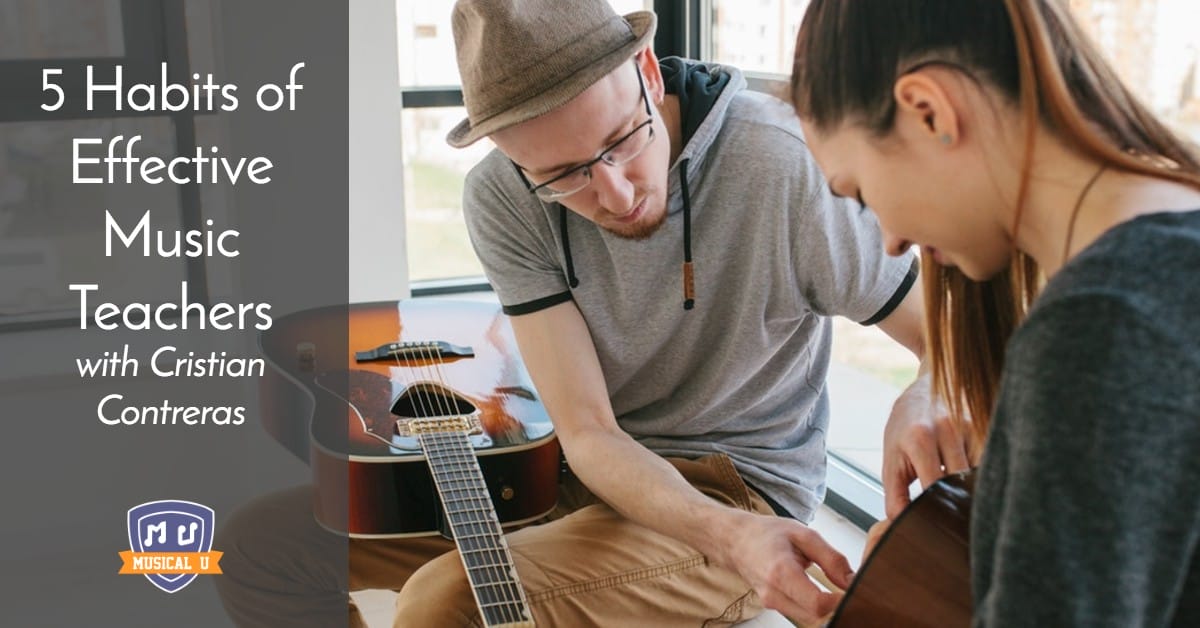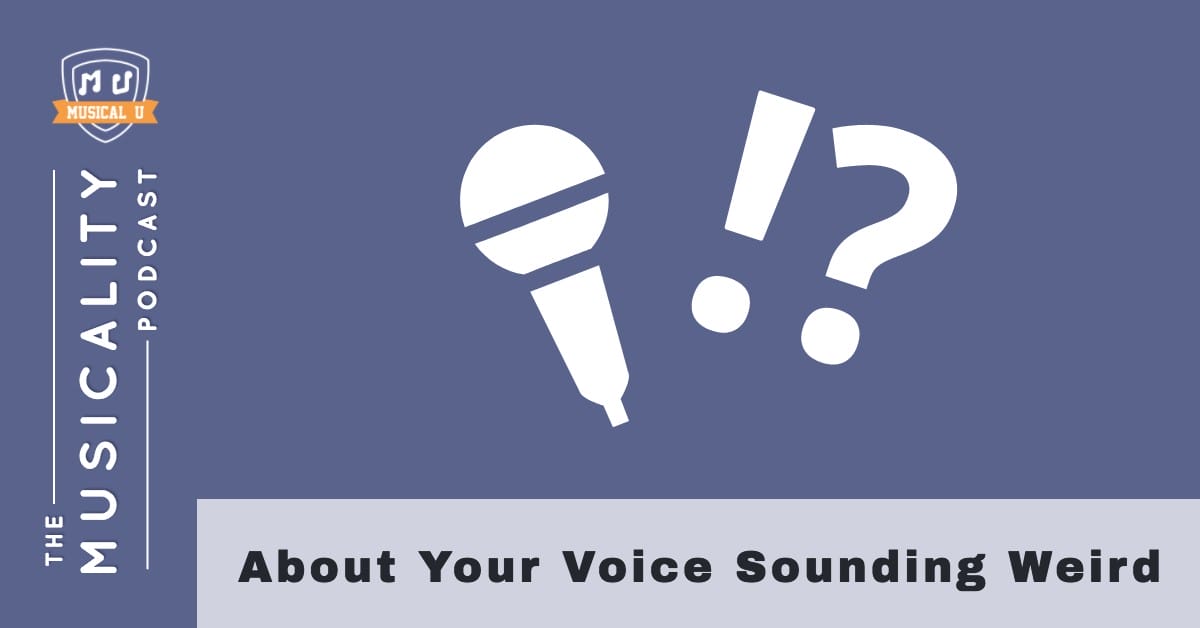To make musical progress, what are the most important tools to have in your kit?
The answer will vary from musician to musician, but at the top of many lists will be expert advice and feedback, an ability to self-critique, and an understanding of how music is written.
This week on Musical U, we’re giving you a little bit of each. Vocal coach Judy Rodman offers valuable advice to singers, music teacher Cristian Contreras explores what is means to teach effectively, and the Musicality Podcast delves into the often-intimidating practice of recording your own singing voice and listening back.
But first, we have a master guide on the backbone that your favourite hit songs are built on: chord progressions!
A Chain of Chords
Behind almost every unforgettable tune is an unforgettable chord progression.
However, chords aren’t just strung together in any order – there are underlying secrets that make certain combinations and series sound incredible, while others fall flat.
 In Musical U’s Introduction to Chord Progressions, we’re giving you a crash course in chords and how they’re put together to form the songs you love. Songwriters, this guide is for you, too – we have seven simple tips to get you writing progressions with punch in no time.
In Musical U’s Introduction to Chord Progressions, we’re giving you a crash course in chords and how they’re put together to form the songs you love. Songwriters, this guide is for you, too – we have seven simple tips to get you writing progressions with punch in no time.
When understanding and writing progressions, there are so many chords and keys to remember. If only there was a shortcut to help put it all together! Fortunately, we have a way of organizing chords in the same scale together into a chord family. Chelsea from The Chord Reserve explores chord families and the benefits of grouping chords this way.
A fantastic chord progression can take you to a new world, a place where you can experience all the emotions that our favorite music brings out in us. For your listening pleasure, Marco Cirillo has recorded six chord progressions that will take your breath away. We hope that this inspires you to dive deeper into progressions and the power that they can bring to any piece of music.
One last note: let’s refer back to one of our favorite subjects: the magical circle of fifths. This musical tool will unlock countless mysteries of music and allow you to express yourself with ease. Consonus Music explores how one teacher uses the circle of fifths to teach composition.
All Things Vocal
Judy Rodman has seen every angle of the world of singing: starting off as a professional jingle singer, she proceeded to land a recording contract, get herself into the Billboard #1 spot, write a hit for LeAnn Rimes, and become one of Nashville’s most sought-after vocal coaches.
In All Things Vocal, with Judy Rodman, she gives a fascinating account of her rich career, how she honed the skills needed to thrive in the industry and expert advice for everyone from beginning singers to seasoned chanteuses.
 Judy’s fascinating musical journey all started with a gig singing jingles. While we often think of jingles as something trivial in our current world, the practice is still very much alive. Are you interested in trying your hand at becoming a jingle singer? Voice Council gives five tips for becoming successful in the field.
Judy’s fascinating musical journey all started with a gig singing jingles. While we often think of jingles as something trivial in our current world, the practice is still very much alive. Are you interested in trying your hand at becoming a jingle singer? Voice Council gives five tips for becoming successful in the field.
Judy has been a star on both sides of the microphone in the musical capital of Nashville, Tennessee. While making it big in this famed city isn’t as easy as the famous television show makes it appear, you can give yourself a leg up with these helpful suggestions from Trip Savvy.
Judy had a turning point in her career when she began to coach other vocalists. We talk a lot about music teachers on this site, but we don’t regularly talk about the difference between a teacher and a coach. Vocal Process discusses the difference between the two, and how you can make the best decision for yourself no matter where you are in your musical journey.
Teaching Music the Right Way
Being a good music teacher doesn’t happen by accident – it requires constant self-education and self-critique.
In 5 Habits of Effective Music Teachers, Cristian Contreras explores what it means to be an exceptional and inspiring teacher. Some of these may surprise you; good teaching does not mean having all the answers, or sticking with tried-and-true repertoire. What it does mean is an adaptive, dynamic approach to the profession.
 Being a music teacher is not an easy vocation, and we are fortunate to have so many wonderful music teachers amongst us. Like all musicians, music teachers have their insecurities about their musical abilities and are always in pursuit of excellence on their instrument. Teaching With Orff discusses “The Imposter Syndrome”, and how you can gain confidence as a music teacher.
Being a music teacher is not an easy vocation, and we are fortunate to have so many wonderful music teachers amongst us. Like all musicians, music teachers have their insecurities about their musical abilities and are always in pursuit of excellence on their instrument. Teaching With Orff discusses “The Imposter Syndrome”, and how you can gain confidence as a music teacher.
Part of being an effective teacher is keeping up with the latest in technological innovations that upgrade the way that we teach. One of the most popular creations in the last couple of years has been Google Docs, a cloud-based way of utilizing basic office apps. But that couldn’t have any application in music, could it? 88 Piano Keys developed a method to organize lesson notes within Google Docs that may change your mind.
Changing times have also changed the way that many people learn, and it is imperative to change with them if you want to make the biggest difference. Teachers Magazine explores two different students’ learning journeys, and gives some valuable information to make sure that you are helping your student.
Listening to Yourself Sing
Recording your own singing voice can be a surreal experience – chances are, what you’ll hear back on the recording is quite different from what you hear inside your own head.
So why this drastic difference in sound, and what can you do to get yourself used to listening to recordings of your singing?
 In About Your Voice Sounding Weird, we explore the physics behind this phenomenon, a tool that can help you hear a great approximation of what other people hear when you sing, and how to objectively judge your singing voice.
In About Your Voice Sounding Weird, we explore the physics behind this phenomenon, a tool that can help you hear a great approximation of what other people hear when you sing, and how to objectively judge your singing voice.
If you have ever sung into a recording device, you have experienced the phenomenon of hearing your own voice for the first time. Inspired to Sing dives a bit further into this subject, with recommendations on how to get over your uneasiness.
No matter how much you don’t like listening to a recording of yourself, there are many benefits to taking this deliberate step in your musical journey. You will learn a great deal about how you perform, and this will help you improve the next time you go into the practice room. Audrey Hunt explains what you should do after hearing a recording of your voice.
While many of us cringe at the thought of hearing our recorded singing voice, can you imagine not being able to listen to your own voice? Recently, America’s Got Talent featured an inspiring young woman who sings with the voice of an angel, despite being totally deaf. We hope that the story of Mandy Harvey inspires you to gain the confidence to sing!
New Paths in Your Musical Journey
In his tips for effective teaching, Cristian Contreras discussed the importance of continuous practice, self-critique, and improvement. This applies equally to teachers and students, and we hope that this week’s offerings have inspired you to explore new avenues in your musical journey, be it recording your voice or writing your own chord progressions.
Want to go even further and train your ears to be the best they can be? Join Musical U to gain access to modules that will enable you to play by ear, sight-sing, and identify intervals and chord progressions.
The post A Chain of Chords, All Things Vocal, Teaching Music the Right Way, and Listening to Yourself Sing appeared first on Musical U.